Enemas aren’t anything new. We are talking about a practice that’s been happening since 1,500 B.C! From China to Africa and South America to North, inventive humans across the globe have fashioned animal bladders, bamboo pipes, and all sorts of contraptions to flush the bowels and jump-start detoxification. Using coffee for enemas became a thing in WWI. Wounded soldiers were routinely prepped for surgery using water enemas. In a pinch with no water around, a nurse used coffee and the results were amazing! When soldiers started noting how much better they felt post-coffee enema, they became standard protocol. Enemas: Much More Than Just Helping You PoopWe think of enemas as only clearing out poop, but their benefits are far more reaching than that. In fact, coffee enemas in particular support the liver as much as they clear crud from the colon. HERE'S HOW: Just inside our rectum (last part of our colon before the anus, or our butthole) resides our hemorrhoidal veins. These veins connect to the major venous system of the liver, the hepatic portal. The coffee’s vasodilatory effect opens these vessels up so that all of its antioxidant-rich compounds are delivered much more directly and quickly than simply drinking coffee. Plus, coffee ingested this way hasn’t been broken down by our stomach acid. With all this stimulating coffee entering the dilated hepatic portal vessels, the liver is triggered to secrete bile. Bile is a critical component of detoxification but many of us, due to a surplus of toxins in our environment and food supply, have lackluster bile creation and flow. Basically, blood is sent to the liver to have all the waste filtered out, and at any given moment, the liver is holding ~10% of our blood! The bile is responsible for removing that captured waste. If we have a sluggish bile, the toxins filtered out of the blood will build up and create a sludgy mess. Sometimes this blocks the bile duct, other times it causes inflammation which stresses the immune system and leads to a vicious cycle of chronic disease. By stimulating bile flow, coffee enemas have the power to de-gunk and unblock, allowing relief and a revitalized detoxification system of the liver and colon. Coffee also stimulates contraction of the gallbladder, the organ that holds the bile for us during digestion. A happily contracting gallbladder means better fat digestion and toxin clearing and less risk of gallstones. Why Coffee?Coffee contains 2 unique constituents found nowhere else: kahweol and cafestol palmitate. Both are known to support healthy gene expression by turning on the genes that increase the rate of detoxification in our intestines. They’ve also been shown to increase the level of glutathione, our most powerful antioxidant, in both the colon and the liver. Glutathione and other antioxidants are vital for breaking down harmful reactive oxygen species (ROS), heavy metals, and other carcinogens and toxins. (1) In particular, glutathione plays a role in inhibiting neoplasia, or the uncontrolled & abnormal growth of tissue - basically what happens in cancerous situations (so my coffee shop customer was right after all!). Theophylline, also found in chocolate and tea, has been used to reduce inflammation in the liver and intestines.Caffeine serves to dilate blood vessels, improving circulation, Qi flow, and delivery of the healing compounds dramatically As herbalists, we know the power of the whole is far greater than a few constituents isolated for science. While these identified compounds are fun to extract and goggle over, it’s the whole bean that offers a matrix of thousands of healing compounds. Together, they create a cooling, diuretic, parasympathetic-stimulating, and anti-inflammatory dose of goodness for our insides. What You’ll Need-Coffee - but not just any coffee. It must be organic, mold-free, fully caffeinated & light roasted (less roasting means more helpful compounds). We like Kion or this. -Distilled or purified (reverse osmosis) is definitely the best option. I love LivePristine water filters for drinking and doing enemas. Berkey filtered water would be the next best thing, but try to use distilled or R.O. if you can! (definitely don't use water straight from the tap!!!) -Coffee enema steel bucket - we like this one! -Something to lubricate the end of the tube that goes inside you. We like coconut oil! -A comfy spot in your bathroom to do the deed. HOW TO* (I promise it’s not as messy as you think): -The best time to do it is in the morning after your first poop. Removing all the poop and trapped gas beforehand will make the experience much more pleasant. Remember that coffee is stimulating so doing this later in the day may disturb your sleep. -Choose a bathroom with a shower to set up your enema. Lay out a yoga mat or some towels on the floor or in the tub- somewhere close to the toilet. You will be laying on this during the cathartic experience. -Make your coffee: Take 3 flat tablespoons of your organic, mold-free ground coffee and add it to 1 quart of distilled water in a pot. Bring to a boil then let simmer for 10-20 minutes (depending on strength desired). Strain and cool until the water is slightly warm/body temp. If you are new to coffee enemas, add 1-2 tbsp of this coffee to 1 quart of filtered, room-temp filtered or distilled water & save the rest of this "mother" coffee for later enemas. As you get more advanced, you can work your way up to using the entire quart of the "mother" as your enema liquid.* (boiling/simmering will reduce the amount of water, so just add more until you have 1 quart). -Pour the water-coffee mixture into your steel enema bucket, making sure the tube is clamped so it doesn’t immediately come pouring out. Hang the bucket from your shower. -Rub some coconut oil on the tip of the tube or on your bum and gently ease it in while laying on your back or your left side. When you are ready, gradually undo the clamp so the liquid slowly flows out of the bucket and into you. Try to fill your booty up with ½ of the quart. If you feel cramping before this, close the flow and let the cramping pass or remove the tip and relieve yourself on the toilet. The goal is to hold each ½ of the quart for 10-15 minutes. Also, if you can’t hold it more than a minute - don’t fret! You are still getting some benefit and the more you do it, the easier it gets. -Be sure to thoroughly clean, sterilize, and dry every part of the enema kit following the kit’s instructions. The whole process should take less than an hour. Pro Tips:BREATHE!!!
Take slow deep breaths when the cramping starts to help you hold it a bit longer. I like to breathe deeply while swaying back and forth on my back to take my mind off the toilet. START SMALL. Start with 1 tbsp of coffee per quart of water, working your way up to 4 tbsp. Start with 1 coffee enema/week, doing up to 3x a week (unless otherwise directed by your healthcare professional, multiple times a day is not a good idea - you can only release so many toxins at one time). NOT TOO HOT, NOT TOO COLD. Never use hot coffee to do an enema (YOWCH!) Let it cool down to a slightly warm or lukewarm temperature (diluting filtered water will facilitate this as well). At the same time, cold coffee enemas are not pleasant either. I like my coffee enema liquid to be gently warm to the touch; this creates a soothing experience. CLEAN IMMEDIATELY. You don't want to forget about cleaning out your kit. I do this with warm soapy water immediately after my enema and am sure to let it dry completely before storing. Running hydrogen peroxide through the tube is also a good idea. *Be sure you speak with your healthcare professional before starting any new healthcare routine. Coffee enemas can be very helpful, but if you aren’t yet ready in your detoxification optimization journey, they could do more harm than good. We recreated a classic with this recipe by soaking our oatmeal prior to baking. If you haven't yet discovered the benefits of soaking your grains before cooking or eating them, read our previous blog for the full run-down on this essential kitchen tip! To sum it up, soaking &rinsing oatmeal removes plant compounds that can impede the full digestion and absorption. This means less gas, bloating and indigestion but more nutrition for you - it's a win-win! Ingredients1 c organic* soats (soaked oats) 1 c blanched almond or pumpkin seed flour 1 c shredded coconut 6 tbsp coconut sugar 1 tsp baking soda 1 hefty pinch sea salt 1 tsp cinnamon 2 tbsp extra virgin olive oil or melted Ghee 1 egg 2 tsp vanilla 3 tsp flaxseed meal 1/2 or 3/4 c chocolate chips (depending on how much of a choco-holic you are) 1/2 cup crushed walnuts or pumpkin seeds DirectionsPreheat oven to 350F and line a baking pan with a Silpat or parchment paper. The night prior to baking, place 1 cup organic oats in a sieve and rinse with water. Next, add the rinsed oats and 2 1/2 cups filtered water to a jar or bowl. Add a hefty pinch of sea salt, cover, and leave on the counter to soak over night. When you are ready to bake, use a cheese-cloth or mesh bag to strain out the soaking liquid. Use your muscles to really squeeze out all the oat juice you possibly can. You can save this to use as oat milk or as a soothing skin wash.
Next, add the "soats" (soaked oats), coconut sugar, olive oil/ghee, egg, vanilla, and flax to a blender or food processor and blend well. Meanwhile in a large bowl mix all the dry ingredients (coconut shreds, nut flour, baking soda, salt, and spices). Mix the blended wet ingredients into the dry and add the chocolate chips and/or nuts. You should be able to roll the dough into 1 inch balls with your hands. I like to lightly wet my hands to make this process even easier. Use your peace fingers to slightly press down on each dough ball so that it's about 1/2" thick (these cookies don't spread much on their own so you have to help them!), Bake for 15 minutes until just beginning to turn golden brown. Remove from oven, let cool, and enjoy! Store in an airtight container in the fridge for up to 2 weeks. This recipe makes 12-16 balls depending on how big you make them. You know us - we love finding creative ways to add our favorite herbal remedies into every day. This moist and fluffy applesauce squares are revved up a few notches with our golden spice blend of Turmeric (Curcuma longa), Cinnamon (Cinnamomum verum or Cassia cinnamomum), Ginger (Zingiber officinale), Nutmeg (Syzygium aromaticum), and Black Pepper (Piper nigrum). People are crazy about curcumin these days, the identified "active constituent" of Turmeric, but did you know that all the constituents minus curcumin possessed more anti-inflammatory qualities than just curcumin alone? This doesn't surprise us - the power of plants lies in the matrix of 1000s of plant compounds all working together to deliver balanced, effective medicine. RECIPE
Preheat your oven to 350 F.
Grease and a 9” round cake pan or muffin tins and “flour” with coconut sugar. In a medium bowl, mix together the first 6 ingredients well. In the same bowl, add the flour, coconut, baking powder, salt, and spices, making sure you evenly mix all the dry ingredients before folding them into the wet (you can definitely do this in 2 bowls, I just find that if you are thorough, there is no need to dirty another bowl). Using a spatula, add the batter to the muffin tins or cake pan. Sprinkle with more shredded coconut, pumpkin seeds, or chocolate chips - whatever suits your fancy! Bake for 30 minutes if using a cake pan or 15-18 if using muffin tins. Remove from the oven and let cool completely before transferring to a storage container to store in the fridge. I love these best right out of the fridge with a dab of Kerrygold butter and sprinkle of sea salt. Or you can top with toasted coconut flakes! *You can try substituting other sweeteners here or even leave it out all together! Oral health is an untapped field in the holistic health and wellness world, but your mouth really is a litmus test for the health of your total body. Chronically inflamed gums? You might wanna look at your cardiovascular health. Horrible halitosis (bad breath)? You 100% have a dysbiosis in your gut. Scalloped tongue? Your body is yearning for alteratives and a diet change-up. We've got a whole workshop going through oral health from an herbalist's perspective, but for now, read on about why we are selling our herby tooth powder. Here's the Tooth TruthAlthough it might leave your mouth feeling minty fresh, conventional toothpaste is not the path towards a healthy & balanced oral microbiome*. While there are a few toothpastes we do love (read on to learn more!), we designed our herby Tooth Seekers Tooth Powder to stand alone or to be used in combination with your favorite toothpaste. Our tooth powder is formulated to:1. Support healthy microbial communities of the mouth -with antibacterial, anti-fungal, antiviral & sialogogue herbs 2. Fight inflammation and sensitivity -with anti-inflammatory, analgesic, astringent, & immune supportive herbs 3. Correct the pH of the mouth to prevent demineralization & protect toothy integrity -with mineral-rich & alkalizing ingredients 4. Freshen the breath -with carminative, aromatic, & antimicrobial herbs How to Use: -Wet your toothbrush (we recommend soft bristle brushes) -Dip it in the tooth powder so that all the bristles are coated in a solid layer. -Brush gently using thorough, circular motions. Be sure to get every surface of every tooth. Aim for 2 minutes of brush-time, minimum. -Alternatively, you can apply a nanohydroxyapatite toothpaste** to your brush and then dip it into the tooth powder for an added dose of herby mineralization (this is the method we recommend!). FUN FACT: *To Fluoride or Not to Flouride - that is the question*To Fluoride or Not to Fluoride - That Is the Question Fluoride use in toothpaste is a contentious topic. While fluoride applied topically has the ability to remineralize teeth, we feel there are far better, safer alternatives for daily use. Consider this: -There’s a reason conventional toothpaste has a poison control warning: fluoride is toxic. Due to its pervasiveness in our water supply and oral products, we are likely swallowing far more than we should. -Where does it come from? Fluoride is an unregulated by-product of our fertilizer industry and the U.S.A has the most fluoridated water in the world. -Numerous studies affirm that fluoride disturbs neurological development - especially in kids (Valdez-Jiménez et al 2011). -The actual amount of fluoride you need to remineralize your teeth would require a prescription strength toothpaste or a visit to the dentist **What is Nanohydroxyapatite?For these reasons and more, we choose to avoid fluoride all together (thanks to our Berkey Filter’s fluoride remover) and replace it with a 100% non-toxic alternative that outperforms fluoride altogether. It’s called nanohydroxyapatite and these nano-sized particles are what naturally make your teeth and bones strong. Our teeth will readily absorb these particles and start rebuilding enamel giving your teeth a smoother, whiter, more reflective, and stronger surface More About the Ingredients in Tooth SeekersOrris root, Iris germanica Taste/Energetics: bitter, acrid, pungent; hot, dry, aromatic Actions: antispasmodic, aperient, aromatic, carminative, expectorant, pectoral, purgative, sedative Orris root comes from the lovely Flag Iris native to the Mediterranean but naturalized in many parts of the US. Like other members of the Iris family, such as Calamus, Orris root has a dispersive, cleansing and purifying nature. Externally, it is cherished as an antiseptic and additive to perfumes and cosmetics for its pleasant violet aroma. Internally, its acrid and aromatic qualities are excellent at breaking up congestion while its antimicrobial action resolves the issue at the root. Historically, the fresh root was given to babies to chew on for healthy mouths and strong teeth. Today, Orris root is commonly found in tooth powders and pastes for its delightful aroma, clearing & opening qualities, and antiseptic (topical) and antimicrobial (internal) actions. Arrowroot, Maranta arundinaceae Taste/Energetics: sweet, bland cooling, neutral Actions: demulcent, mucilaginous, nutritive The rhizomes of this tropical plant have been used as a nutritive & thickening agent in foods and medicines for 1000s of years. The common name “arrowroot” refers to its historic use as an antidotal poultice for poisonous arrow wounds. It was also used as a topical remedy for spider and snake bites. It provides a nice, neutral base for tooth powders Myrrh, Commiphora myrrha Taste/Energetics: spicy, neutral Actions: analgesic, anti-inflammatory, antimicrobial, antispasmodic, astringent, carminative, expectorant immune stimulant This precious resin of the gum tree has been treasured for centuries for its ability to calm mucus membrane irritations from pharyngitis to UTIs. It’s particularly adept at resolving infections of the lungs and mouth. It’s antimicrobial and astringent action makes it an excellent gargle for sore throats or a topical application for wounds. *Do not ingest myrrh if pregnant due to its emmenagogue effect Echinacea, Echinacea angustifolia Taste/Energetics: cooling, pungent, stimulating Actions: alterative, antimicrobial, anti-inflammatory, immune stimulant, sialagogue, vulnerary Echinacea root is one of our favorite remedies for dry mouth, bad breath, or inflamed gums. It’s powerful sialagogue action encourages salivary flow which moistens the mouth and bathes it in infection-fighting moisture. It’s a vulnerary, healing wounds in the mouth, and a gentle immune stimulant and alterative, improve the overall function of the immune and lymph systems. Cinnamon, Cassia cinnamomum Taste/Energetics: warming, drying, pungent, sweet Actions: analgesic, astringent, anti-inflammatory, antimicrobial, carminative, circulatory stimulant, styptic With it’s spicy sweet anti-inflammatory and astringent action, Cinnamon was made for the mouth. We love it for its ability to: tone and tighten inflamed gums; get that nourishing blood flowing; promote breath freshness, and resolve microbial imbalances in the mouth Clove, Syzygium aromaticum Taste/Energetics: pungent, spicy, hot, dry Actions: anesthetic (topically), analgesic, anti-inflammatory, antimicrobial anti-oxidant, antispasmodic, astringent, carminative, expectorant People have been chewing on Clove buds to ease toothaches for centuries - Clove’s pleasantly aromatic, spicy taste and pain-relieving nature lends itself beautifully to any oral routine. Baking soda Did you know that every time you eat, you are de-mineralizing your teeth? Your body necessarily tells your mouth to create an acidic environment in order to aid the digestive process (this is why sticking to 3 square meals and not snacking is a very good habit for your teeth!). Baking soda is highly alkaline and therefore encourages a healthy pH, supports beneficial bacteria, and protects your enamel from decay. Plus it’s known to whiten teeth! On its own it can be a bit abrasive, so we’ve balanced it with other herbs to make it a-okay for moderate daily use. Xylitol This sugar alcohol is known for its abilities to reduce cavity-causing bacteria and freshen the breath. We add just enough to get the benefits without going overboard on the sweetness Resources
We love Dr. Mark Burhenne’s approach to oral care. You can follow him at @Askthedentist or check out his website www.askthedentist.com) To learn more about the tooth truth about fluoride, visit www.fluoridealert.org Creative Commons: Aracaria Biodynamic Farm, Nikonian Novice Tahini is one of our most cherished ingredients - it's versatile, affordable, and loaded with health benefits. It is equally delicious in desserts, main dishes, breads, or by the spoonful for a quick snack (goes great with honey & sea salt if enjoying it this way!). This creamy "nut butter" made from sesame seeds is a fraction of the cost of almond butter - with a much smaller environmental impact! Though from a tiny seed, tahini's nutrient density is impressive: -Compared to other seeds and nuts, sesame seeds have a very high fat (55%) and protein content (20%) by weight. -Tahini is also particularly high in minerals, especially iron and copper. Studies have affirmed that tahini is a heart healthy food: it's high in lignans and its 2 primary fat compounds- sesamin and sesamolin- have showcased anti-thrombotic effects. So let's get to the good stuff - our Ta-honey Mustard Recipe! This sauce goes great as a dressing or a dipping sauce for meats, veggies, or chips! Ta-Honey Mustard Recipe In an 8 oz mason jar, add ½ cup tahini and 2 tbsp apple cider vinegar. Stir together; as you stir the acid from the vinegar will react with the proteins in the tahini and make the mixture very thick. Stir in filtered water (~3 tbsp to ¼ cup, depending on the runniness of your tahini) until the consistency is silky smooth like Ranch dressing. Next, add 1 tbsp of garlic fermented honey* (regular honey will do), 2 tsp dijon mustard (or more if you are a mustard lover), 1 tbsp turmeric powder and a hefty pinch of salt and pepper to taste. This recipe is flexible - add more or less of anything to achieve your desired blend. garlic fermented honey* recipe below! Garlic Fermented Honey Recipe
Loosely seal the filled jar with a lid (we like these!) and let sit at room temp away from direct sunlight. The slightly loosened lid will allow fermentation gases to escape. Every other day or so, tip the jar upside down a few times (make sure you fully seal the lid when you do this!) to circulate the honey. You will start to see tiny bubbles indicating that fermentation process is at work! This alchemical process will begin around day 3 and continue for 1 month, but you can enjoy the honey at any time during this period. You will notice the flavor and texture develop over time - the garlic's pungency will mellow and the honey will become runnier.
Store in a cool, dark place for many moons. If kept sealed and away from heat and light, it can easily last 1 year or more! After I use up all the honey, I like to blend up the cloves in pestos and other sauces. This cookies are packed with protein and energizing cacao - making them great for a quick breakfast or a pre/post workout snack. Oh, and they go great with coffee :) Pay attention to the room temp ingredients- it makes a difference! Ingredients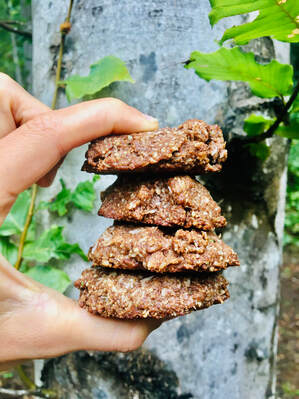 ½ cup of your favorite nut butter ¼ cup unrefined coconut oil, room temp ⅓ cup coconut sugar ( or 1/4 c maple syrup) 1 tsp vanilla extract 1 egg, room temp 1 c nut flour (we like a combo of pumpkin and sunflower seeds. Simply pulse whole seeds until a grainy, coarse sand texture is achieved)* 1 c finely shredded coconut flakes* ⅓ c cocoa powder ½ tsp baking powder Hefty pinch sea salt Optional: ⅓ cup chocolate chips; extra coconut sugar for sprinkling on top of the cookie dough before baking! *Depending on how runny the nut butter is, you may have to use ~½ cup more of dry ingredients. DirectionsPreheat your oven to 350 F and line a baking sheet with a Silpat or parchment paper.
Using a spoon or whisk in a medium bowl, mix together the first 4 ingredients until well incorporated (much easier when the coconut oil and nut butter are room temp!). Next, mix in the egg (again, make sure its room temp or it will cause the coconut oil to clump). In another bowl or directly into the wet ingredient bowl, add the remaining 5 ingredients to the wet until a slightly sticky batter has formed. You want your batter to come off your spoon in a solid ball when you forcefully drop the batter onto your cookie sheet (like the motion of flicking of a whip, except with a spoon). As mentioned above, you may need to add more dry ingredients to achieve this texture. You can use your fingers to shape the dropped dough balls into uniform spheres, but I like the rough and chunky look. You can also sprinkle with more coconut sugar at this point. Bake at 350 for 10-12 minutes until firm and slightly golden brown on the top and bottom. Let cool a bit before transferring from Silpat to a wire rack with a spatula. These will store for up to 2 weeks in an airtight container kept in the fridge. (They ain't gonna last that long though...) We don't have babies yet, but we have many in our community carrying on the incredible role of being a mother. While having children is a gift, it certainly comes with its struggles of the body and mind. That's why we created this tea - to nurture the mother after delivery, supporting her physical and emotional body. Postpartum is a speck of time unlike any other, and with this tea we hope to augment the good and celebrate the creation of life! Read on to learn more about the herbs in Post-partea! * ***BONUS: this tea will nourish expecting mothers, too! All the herbs in Post-Partea are Class 1, meaning herbs that can be safely consumed with no identified concerns during pregnancy or nursing. Lemon balm, Melissa officinalis, Lamiaceae
This lemon-y mint is indicated for those feeling weary and depressed - it is the ultimate, delightful antidote to that gloom-and-doom sort of depression that sometimes eclipses a new mother after going through such an incredible (yet exhausting!) experience. Lemon balm uplifts and revitalizes. As an antispasmodic and analgesic, she eases physical aches and pains while her nervine, anti-depressant properties tend to emotional pains. Lemon Balm has been used successfully in clinical trials to ease postpartum mother pains. Tulsi, Ocimum sanctum, Lamiaceae Progesterone drops after pregnancy, as does the sense of joy and meaning that high levels of this hormone provide. This drastic change in mood as hormones recalibrate is so common it even has a name - the baby blues - leaving new mothers especially emotional and sensitive. Fortunately, nervines like Holy Basil remedy this situation by nourishing the nervous and endocrine systems. Tulsi is also an adaptogen, enhancing your body’s ability to handle stress - something every postpartum mom can use. Oatstraw, Avena sativa, Poaceae A gentle, restorative tonic perfect for nursing mothers who need added vitamins and minerals to support their transition to motherhood. Drunk regularly, Oatstraw rebuilds tissue - particularly of the nervous system - and supports total body health. Hawthorne, Cratageus spp., Rosaceae This multi-faceted herbs tends to both the emotional and physical heart. Compounds in Hawthorne literally strengthen the heart muscles while its nervine properties build up emotional resolve. Hawthorne leaf, berry, and flower are tonics to the cardiovascular system, intended to be drunk regularly for gradual, inevitable improvement. When we improve our cardiac function, we improve blood flow and therefore nourishment and rejuvenation to the entire body. It can be tricky navigating the does and don'ts of herbal remedies while pregnant. Unfortunately in the West, there's just not enough clinically backed science for medical professionals to advocate for the use of many herbs before/during/after pregnancy, even if they may be safe. Here are some things to keep in mind when considering using herbs while pregnant: 1. Where Does It Come From? This is HUGE. Herbs aren't regulated by the FDA which means you don't know what you are getting unless you trust the company you are purchasing from. Make sure the supplier you use is able to provide details on the herb/products origins, and always opt for organic - the benefits far outweigh the slight price difference. 2. How Much Are You Taking? "Danger is in the dosage" is a phrase that applies here. For example, a sprinkle of Cinnamon on your morning oatmeal may be a harmless treat, but in large amounts, Cinnamon's great warmth and moving energetics make it a powerful uterine stimulant while pregnant. For this reason, it's important to assess all the herbs - culinary & medicinal - you consume and make sure you aren't overdoing it. 3. Who Are Your Resources This one comes with a bit more nuance, but it's important to understand that there are many voices in the medical and herbal field. No matter the herb, you will get conflicting results for many a Google search about its safety while pregnant. Always exercise caution and go to sources you trust. Since there is so much noise on the web, we look to tradition and tried and true textbooks. If you are working with a midwife, doula, holistic doctor, they can also help! Since we have so many mommas in our community, we wanted to share the safety ratings for the herbs used in our products. See below! Also, don't hesitate to reach out if you have any clarifying questions! Safety Rating1 - safely consumed when used appropriately 2 - the following restrictions apply unless otherwise directed by an expert 2a- external use only 2b- not during pregnancy 2c- not while nursing 2d- other specific use restrictions 3 - only use under the supervision of an expert; labeling must include dosage, contraindications, etc. 4 - insufficient data for classification Powdered Herb BlendsGold Dust Turmeric - Class 2b*, 2c*, 2d Therapeutic quantities not to be taken for those with bile duct obstruction or gallstones, stomach ulcers or hyperacidity; stand dose is 1.5-3 g daily; 4.5-9 g when prepared as tea Eleuthero - Class 4 It is likely there are no issues if taking 1 tsp/day of powdered herb during pregnancy/nursing, but data is lacking. Always check sourcing for adulterated products. Maca - Class 1, Class 4 A German doctor released his own article with claims that there is evidence that taking Maca during pregnancy can prevent miscarriage, likely safe but data is limited Cinnamon - Class 1 Fenugreek - Class 2b, Promotes milk flow (galactagogue) Cardamom - Class 1 Nutmeg- Class 1 Black Pepper- Class 1 Matcha Magic Matcha- Class 1 Shatavari- Class 1 Rose- Class 1 Eleuthero- Class 1 Cardamom- Class 1 Ginger- Class 1 RALLY Dandelion- Class 1 Reishi- Class 1 Chicory - Class 1 Shatavari- Class 1 Ashwagandha- Class 2b*, 2d, May potentiate the effects of barbiturates; not recommended for those with hyper-thyroid function; Traditionally used to improve conception and to provide strength and stamina to mom and growing baby. After birth, it is thought to help mom regain energy and stimulate milk flow. Large amounts can cause early menstruation and therefore there lies the risk of abortion (uterine stimulant), which is why it’s discouraged by conservative doctors. Do not exceed 1 tsp/day during pregnancy and always check with primary healthcare provider Cardamom- Class 1 Cinnamon- Class 1 Loose-leaf TeasBless You Tea Nettle- Class 1 Rose- Class 1 Calendula- Class 1 Elecampane- Class 2b*, 2c* Horsetail- Class 2d, contraindicated in cardiac or renal dysfunction; don’t exceed 2 g/day of powdered form. Powdered form is not recommended for children due to silica. If taking 5 g, have with food Ginger*- Class 1 Licorice*- Class 2b*, 2c*, 2d Not for prolonged use in high doses; contraindicated in diabetics, hypertension, liver disorders, severe kidney deficiencies, and hypokalemia; may potentiate potassium depletion of thiazide diuretics, stimulant laxatives, cardiac glycosides, and cortisol; reduce sodium and increase potassium when taking Defender Ginger- Class 1 Elderflower- Class 1 Elderberry- Class 1 Holy Basil-Class 1 Lemon Balm- Class 1 Licorice*- Class 2b*, 2c*, 2d, see previous Cardamom- Class 1 Healing Harvest Tea Roobios - Class 1 Oat straw - Class 1 Orange peel - Class 1 Licorice* - Class 2b*, 2c*, 2d, see previous Ginger*- Class 1 Angelica* -Class 2b*, 2d avoid prolonged sunlight exposure; emmenagogue/uterine stimulant Artichoke - too little data Sexy Time Tea Hawthorne (leaf and flower) - Class 1 Damiana - Class 1 Hawthorne Berry - Class 1 Rose - Class 1 Ginger* - Class 1 Licorice* - Class 2b*, 2c*, 2d, see previous Sol Tea Hibiscus - Class 1 Lemongrass - Class 2b*; emmanogogue/uterine stimulant Holy basil - Class 1 Schisandra - Class 1 Wonderful Woman Oat Straw - Class 1 Tulsi - Class 1 Nettle - Class 1 Raspberry Leaf - Class 1 Rose - Class 1 Ginger* - Class 1 Red Clover - Class 2b* (used in minimal amounts here) Cardamom - Class 1 You’ve Got Male Nettle- Class 1 Lemongrass- Class 2b*, emmanogogue/uterine stimulant Hawthorn Leaf- Class 1 Hawthorn Berry- Class 1 Hibiscus- Class 1 Epimedium- Class 2d*, Not for singular long-term use at large doses; In very large doses, can cause vomiting, dizziness, dry mouth, thirst, nosebleed, and respiratory arrest Ashwagandha- Class 2b*, 2d-see previous Ginger*- Class 1 Licorice*- Class 2b*, 2c*, 2d-see previous ***Licorice, Ginger, Cinnamon, Nutmeg, Artichoke leaf, and Black pepper can all cause issues when taking in unnaturally large amounts and without the balancing support of other herbs. We use very small amounts of these synergizing herbs in our formulas, not large therapeutic doses that can have a uterine stimulants effect.*** Our safety ratings were obtained from The Botanical Safety Handbook by The American Herbal Products Association Staff, 1997.
Other Resources: Herbal Contraindications and Drug Interactions Plus Herbal Adjuncts with Medicines, 4th Edition, Francis Brinker Publications by the American Herbal Products Association Understanding the magical history of matcha might elevate your tea-drinking experience Matcha revolutionized the way we drink tea. Before 12th century Zen monks popularized this powdered form of Camellia sinensis, leaves were dried and compressed into bricks before drinking. Matcha’s first advocate, the Zen monk Eisai, taught his pupils how to properly cultivate and regularly consume powdered tea for optimal spiritual and physical health. Back then, the growing process was revered as much as the ceremony of drinking tea. An Enchanting UpbringingTea bushes were treated with great respect and care from seed to harvest. In the winter, they were allowed a full season of rest in order to accumulate nutrients below ground. The tea bushes would awaken from their slumber in the spring, fortified by their hibernation and ready to transfer energy into newly forming buds. This is why the first spring harvest is always the sweetest and most nutritious - just as we feel best after a period of rest, Camellia sinensis creates the best product when it’s allowed the entire winter to restore. Since sunlight causes bitterness, wooden structures topped with reed screens were built around the bushes to block ~75% of the sunlight. 10 days later, a layer of straw was placed over the reeds, blocking 90% of sunlight. This added effort renders an incredibly soft, bright green leaf to later be hand-picked by skilled harvesters. After harvest, the leaves are steamed to prevent oxidation before being put into columnar wind turbines outfitted with nets to dry and catch all the leaves. Next the leaves are sent to ovens with three layers of conveyor belts where they go through multiple rounds of drying at various temperatures. At this point, the leaves are called raw tencha. It’s not until the leaves are cut, separated from twigs and veins, and stone-milled into a powdered form that they finally become matcha. Before the 20th Century, matcha was consumed as ‘thick tea’ (koicha) in which a large amount of matcha was mixed with only enough hot water to make it fluid. Koicha was considered the purest form of matcha because in order for it to be drinkable, only the sweetest, most tender leaves could be used. Thin tea (usucha) was reserved for more laid-back occasions. This is what we drink today. Reclaim Ritual - Make Your Tea Time Exceptional
Many people might not realize that they are as attached to the process of making a morning pot of coffee as they are to the caffeine. Humans crave rhythm and routine- it’s in our DNA! Creating a ritual around our tea making and drinking process can be highly beneficial to your physical and mental health. Maybe squeezing in a few words of gratitude, prayers, or simple stretches while your water boils and savoring the first few sips slowly and silently will not only calm your adrenals but also get your mind in the cool, calm, and collected setting it craves in our hectic world. We've turned modern matcha magical with our carefully formulated blend.To elevate the modern matcha drinkers experience, we add adrenal nourishing herbs like Shatavari (Asparagus racemosus) and Siberian Ginseng (Eleutherococcus senticosus) to our Matcha Magic. These adaptogens fortify and calm our stress response. Heart strengtheners like Rose (Rosa rugosa), rich in Vitamin C, and Ginger (Zingiber officinale), improve circulation and support cardiovascular function. A touch of Cardamom (Eletarria cardamomum) supports digestive function, cleanses the breath, and imparts a lovely, aromatic finish. We use organic matcha, finely ground and with a bittersweet taste the pairs perfectly with the other herbs and a spot of cream. The Perfect Cup of Magic Matcha
CC Flickr pics: Dinesh Valke, Christine Lynch, Markus riedi, Betty Dish, Brian Wotherspoon,
We’ve all got men in our life that could use some herbal love. By and large, herbalism is a women’s world. There are many reasons for this. Women naturally might be more attracted to medicine made from beautiful plants, and historically, creating herbal remedies fell under the realm of the homemaker. Herbs are also particularly useful in pregnancy, childbirth, and supporting hormonal health. However, men stand to benefit equally from plant medicine. These days, it’s hard to find a supplement for men that does more than just enhance libido. Men have needs too, and we wanted to create a tea that saw to them. The herbs in You’ve Got Male are listed below. Our formula is carefully balanced to provide support without tipping any one system out of balance- a common issue in simple formulas showcasing only one herb. More on the Herbs in You've Got MaleHawthorne, leaf, flower, and berry, Crataegus spp, Rosaceae Sweet, sour, warm, astringent, heart-opening + strengthening, cardiotonic In our culture (and in general), its not as common for men to express their emotions as freely as women. Traditional wisdom acknowledges that when we repress our emotions, it manifests physically. High blood pressure, weakened or exhausted heart muscle, and other cardiovascular issues may all be a result of this repression. Hawthorne is known to strengthen the heart, physically and emotionally, with clinical studies to back it up. Lemongrass, Cymbopogon citratus, Poaceae Cooling, sour, antidepressant, anti-inflammatory, anti-fungal, diaphoretic, digestive Lemongrass is the ultimate cooling remedy. Men tend to get a bit more overheated than women, so this mild yet effective herb can do the trick to calm and relax. It's traditionally used to cool fevers and release heat. As a diuretic and diffusive, it helps with the elimination of waste, reducing heat and inflammation once again. Apart from its purely physical effects, Lemongrass is also capable of promoting feelings of hope, confidence while helping to decompress and relax. Nettle leaf, Urtica dioica, Urticaceae Dry, cool, nutritive, alterative, alkalinizing diuretic, urinary tract tonic Nettle is an amazingly nutritious tonic herb meant to be taken regularly. It’s high mineral content builds bone, muscles, and hair. It’s particularly high in iron for healthy blood, and magnesium, a critical mineral deficient in the SAD diet but that enhances exercise performance and nervous system health. Roselle, Hibiscus sabdariffa, Malvaceae sour, slightly sweet, bitter, cool, soothing, hypotensive (lowers blood pressure), reduces prostate Another cooling herb with a propensity to enhance heart health (lowering blood pressure and lipid levels), Roselle (or Hibiscus) is tangy, delicious, uplifting energizing without containing caffeine! It’s also been used to help treat prostate cancer due to its high antioxidant content. Studies show that Roselle inhibits the expression of prostate cancer cells and their signaling pathways. Horny Goat Weed, Epimedium grandiflorum, Berberidaceae Dry, acrid, warm, possible adaptogen, strengthens HPA axis, hypotensive, aphrodisiac, anxiolytic, circulatory stimulant Epimedium was made famous when a herder noticed his goats exhibited robust sexual activity after nibbling on Fairy Wings (common name of this beautiful ornamental). Epimedium is used in TCM to support normal peripheral circulation and to tonify kidney yang energy, or the driving force of libido. In the West, icariin, an active constituent, has received great attention because of its ability to inhibit Phosphodiesterase type 5*, the same mechanism of pharmaceutical male enhancement drugs (although plant medicine always represents a safer, more balanced remedy due to the vast number of compounds working along with the active constituent). Historically, because of it's potency and potential for exhausting the kidney yang in the long-run, Epimedium is always used in balanced formulas. *Do not take Horny Goat Weed if also taking a Phosphodiesterase Type 5 Inhibitor Ashwagandha, Withania somnifera Dry, warm, adaptogen, anti-inflammatory, antioxidant, antispasmodic, astringent, immune amphoteric, mild sedative We couldn’t make an herbal tea without adding the Sweat of the Stallion. This root is historically used to enhance the strength, endurance, and virility of men - and it works! Ashwagandha is a calming adaptogen, providing strength and energy while also supporting the adrenals for calm and focus. Licorice, Glycyrrhiza glabra, Fabaceae Sweet, warm, bitter, moistening , adaptogen, adrenal support, anti-inflammatory (specific to irritated GI tract), demulcent, expectorant, nutritive, antispasmodic, aperient (mild laxative), hepatoprotective We add this sweet root to harmonize the formula while adding an adaptogenic touch. Like Ashwaghanda, Licorice is an adaptogen that enhances the body’s ability to handle stress. Due to its soothing, mucilaginous nature, it's been used to treat ulcers and inflammation in the digestive tract. Licorice is known to enhance the activity of other herbs when used in formula Ginger, Zingiber officinale, Zingiberaceae Warming, dry, peripheral circulatory aid, cardiotonic, hypolipidemic, analgesic, digestive, antiatherosclerotic Herbs that enhance circulation are critical for healthy reproductive function, particularly if you have a long commute to work or sedentary job. Similarly, Ginger is renowned in its ability to strengthen the cardiovascular system but stimulating circulation. Ginger is a supreme digestive, soothing to the stomach, dispelling gas and enhancing digestion. Anyone with a sluggish digestion with gas and burping will benefit from daily Ginger. Ginger has also been shown to be as effective as aspirin for remedying headaches. Creative Commons, Flickr: Carol Coward, Hair Prasad Nadig, Sidney Pacheco, Tatters, Forest and Kim Star, Christine Lynch, Markusriedi, Betty Dish
|
Eileen Brantley & Amy WrightWe are Herb Girls Athens, LLC. Read our blog! Archives
November 2022
Categories
All
|



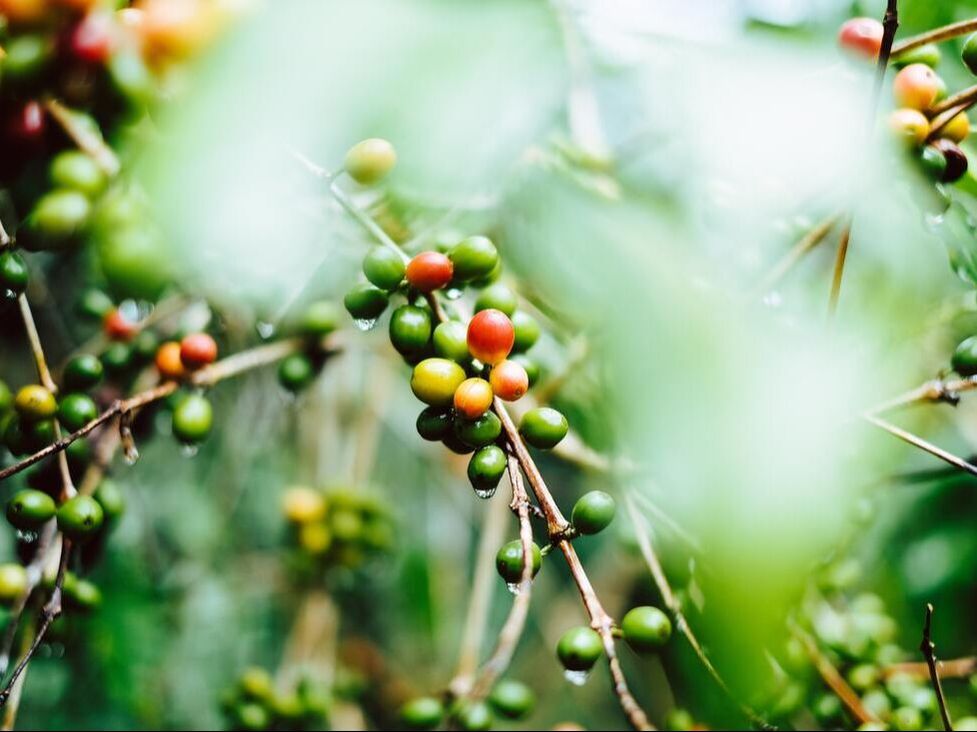

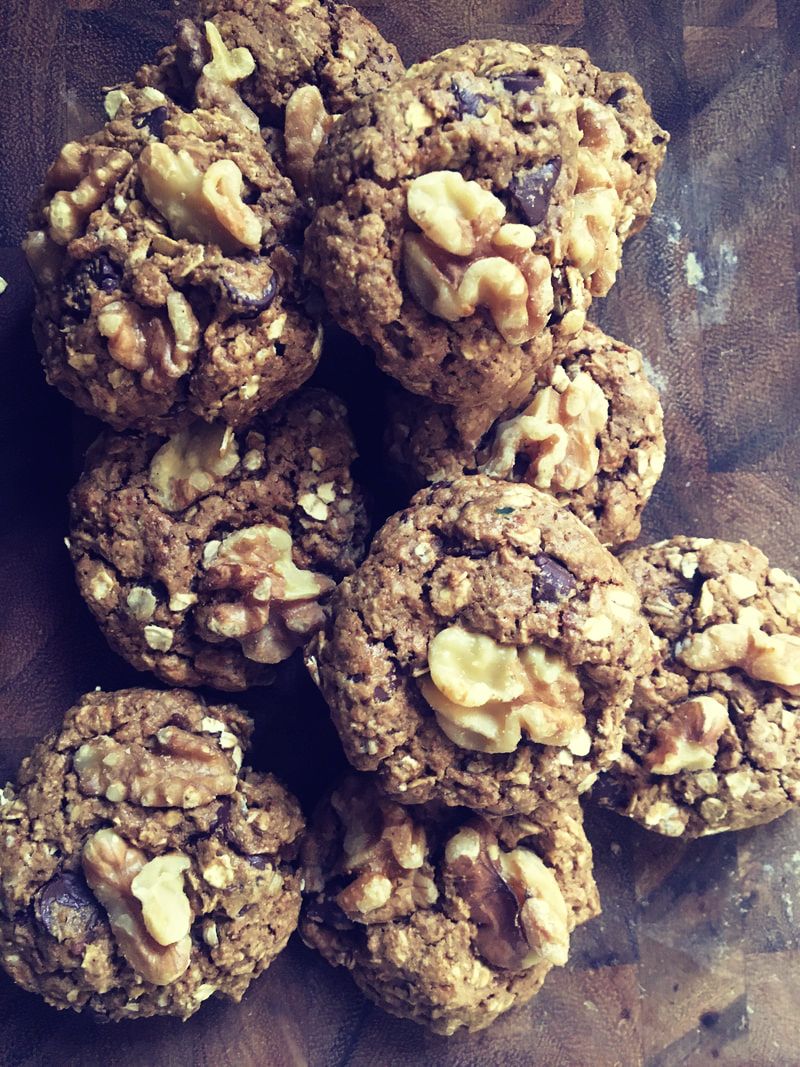
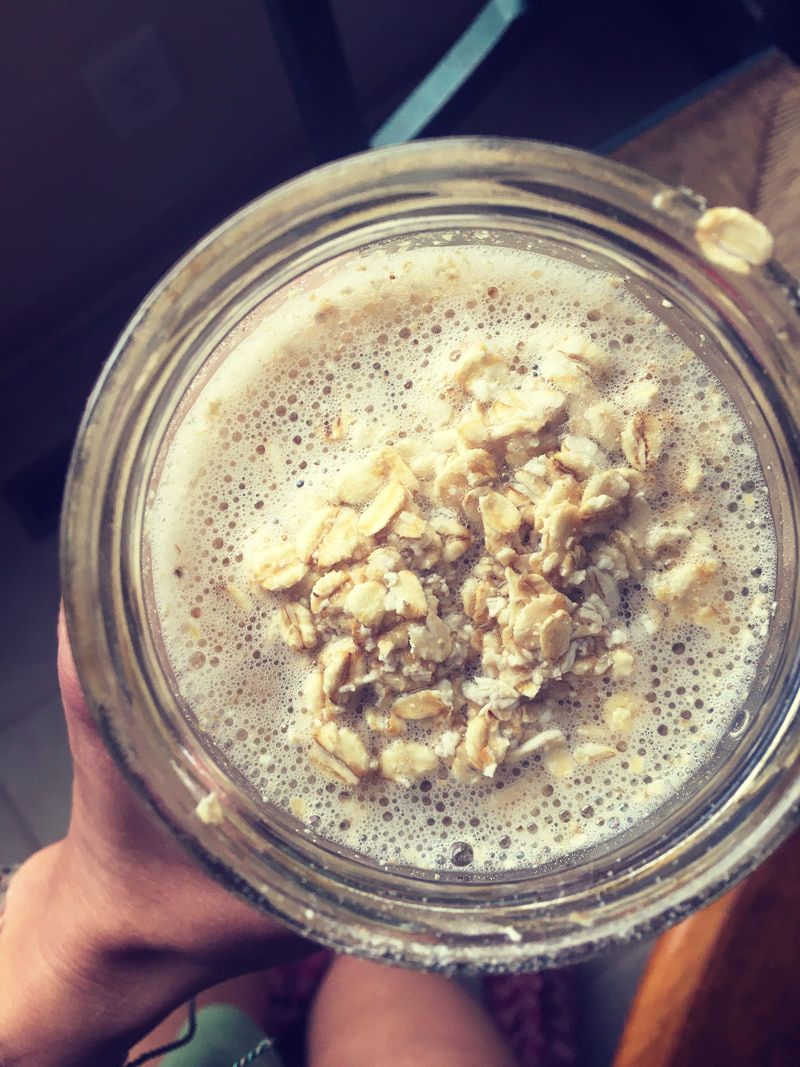
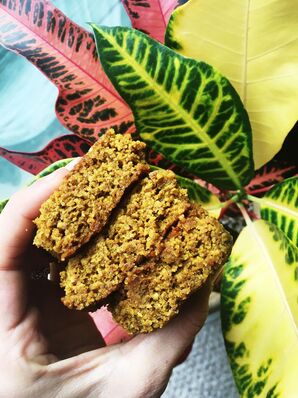
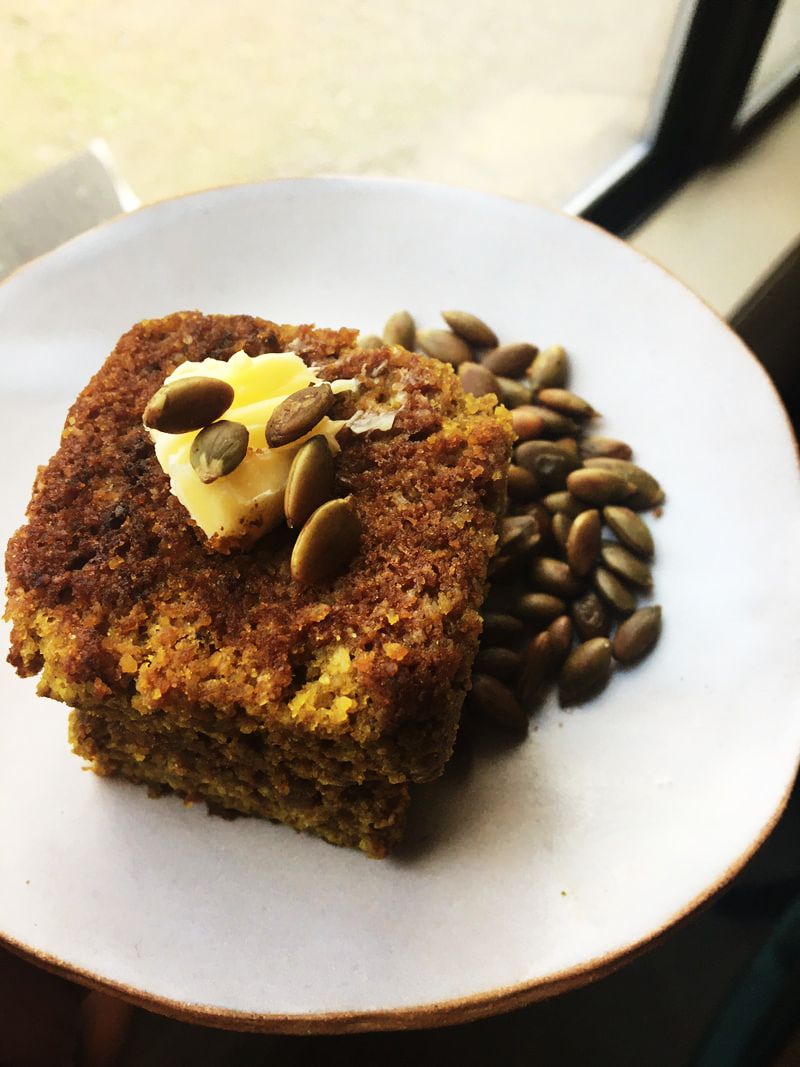
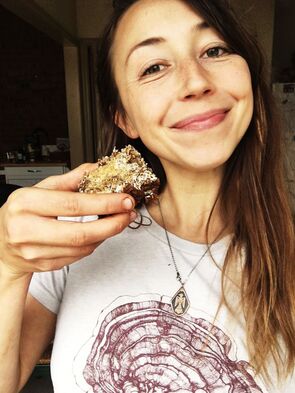
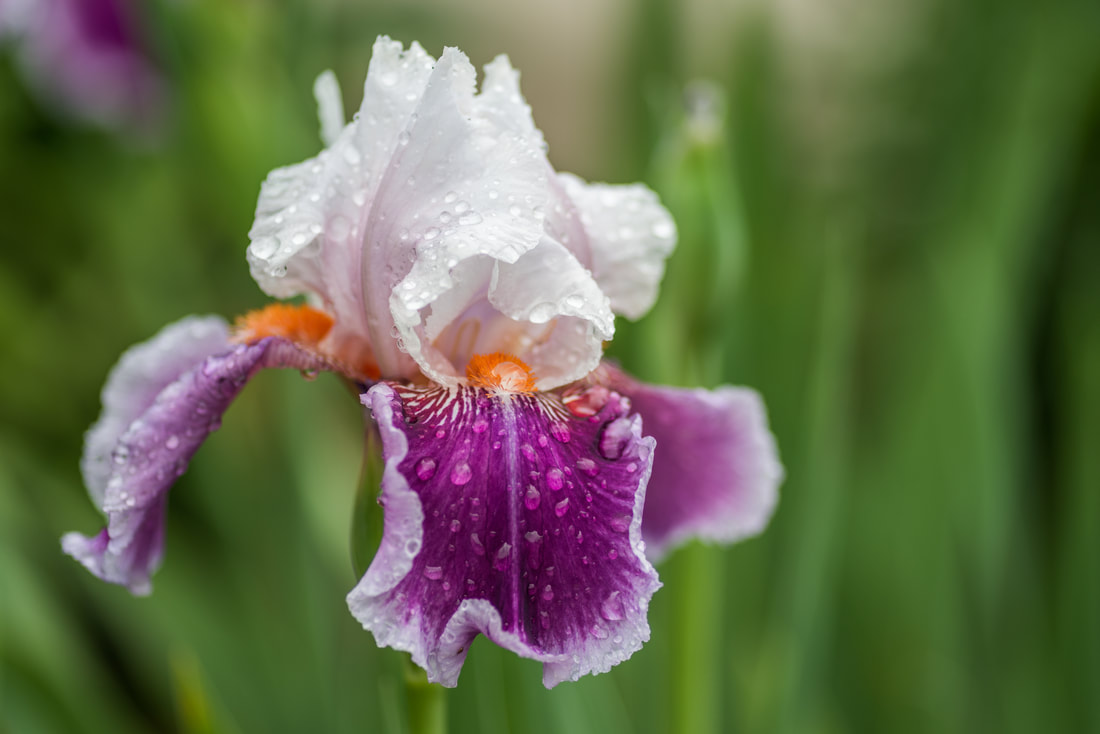

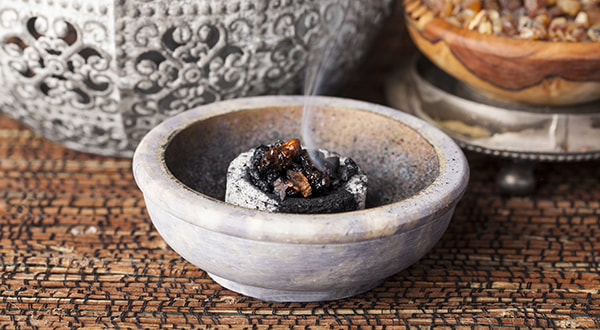
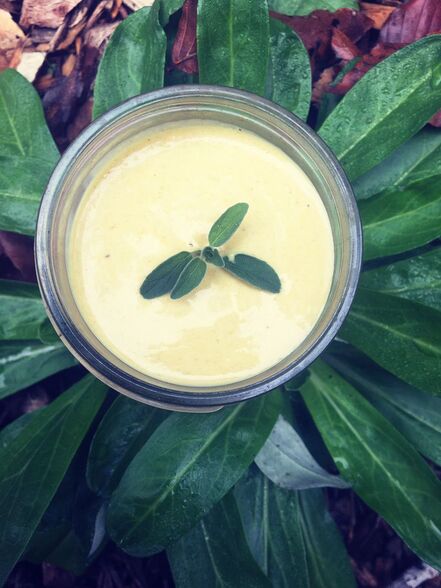
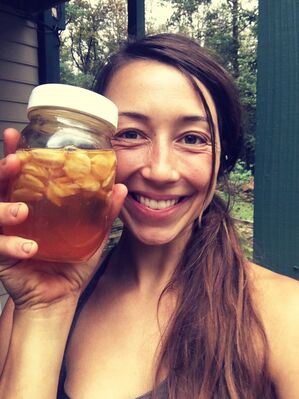
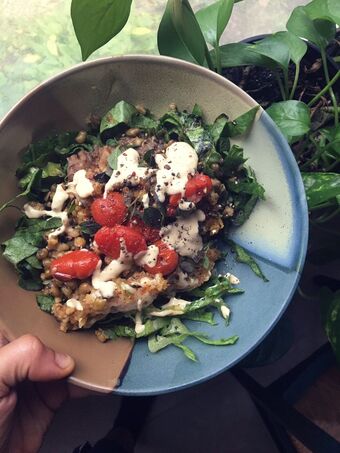
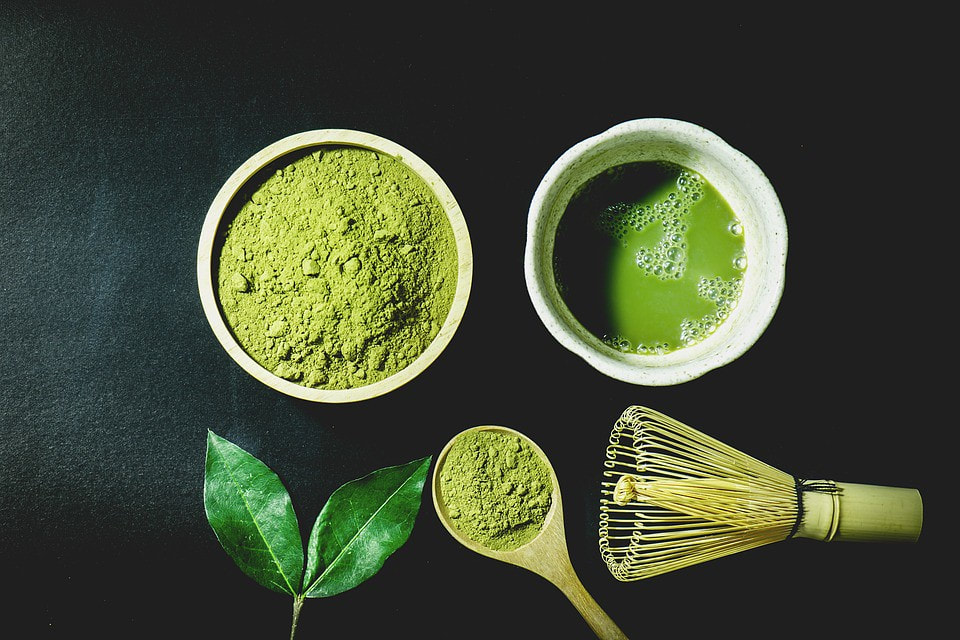

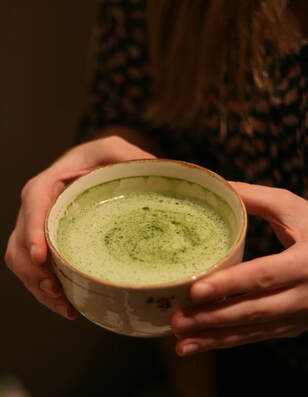
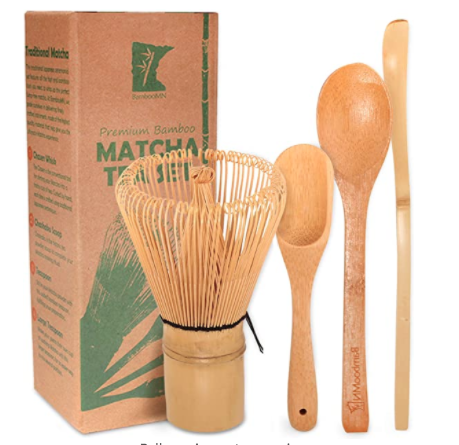

 RSS Feed
RSS Feed
